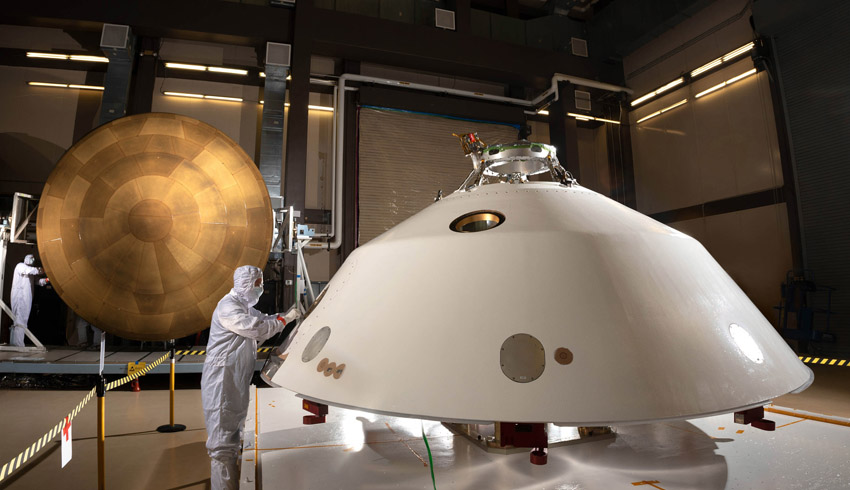MEDLI2 is a collection of sensors that will measure aerothermal environments and thermal protection system material performance during the atmospheric entry phase of the Mars 2020 mission – the sensors successfully passed a battery of environmental tests before being installed on the Mars 2020 heat shield and backshell to ensure they could withstand launch and the harsh conditions of space.
During the recent MEDLI2 cruise checkout, the team at the Flight Mission Support Centre at NASA's Langley Research Centre in Hampton, Virginia, received data back from the spacecraft for the first time since the rover launched in July.
Henry Wright, MEDLI2 project manager, explained, "This is the first time MEDLI2 has been tested since before launch. The test went great; we got the data we wanted, and everything looks like we predicted it would."
The test ensured that sensors and electronics powered on successfully and pressure and temperature sensors were measuring as expected.
"With this verification that MEDLI2 survived launch and the cold of deep space, the team is excited to support the Perseverance rover's landing in February," Wright added.
MEDLI2 is a Game Changing Development project led by NASA's Space Technology Mission Directorate with support from the Human Exploration and Operations Mission Directorate and Science Mission Directorate, the project is managed at Langley and implemented in partnership with NASA's Ames Research Centre in California's Silicon Valley and NASA's Jet Propulsion Laboratory in Southern California.
A key objective of Perseverance's mission on Mars is astrobiology, including the search for signs of ancient microbial life. The rover will characterise the planet's geology and past climate, pave the way for human exploration of the Red Planet, and be the first mission to collect and cache Martian rock and regolith (broken rock and dust).
Subsequent missions, currently under consideration by NASA in cooperation with the European Space Agency, would send spacecraft to Mars to collect these cached samples from the surface and return them to Earth for in-depth analysis.
The Mars 2020 mission is part of a larger program that includes missions to the Moon as a way to prepare for human exploration of the Red Planet. Charged with returning astronauts to the moon by 2024, NASA will establish a sustained human presence on and around the moon by 2028 through NASA's Artemis lunar exploration plans.
JPL, which is managed for NASA by Caltech in Pasadena, built and manages operations of the Perseverance and Curiosity rovers.

